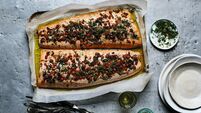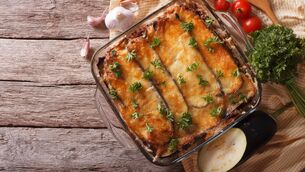Darina Allen: Penne with Spicy Sausage and Summery Fettuccine Alfredo — just two of so many delicious pasta dishes

Life without pasta — can you imagine! Well, I can though I would no longer want to contemplate a scenario where the 'go to' pantry ingredient was unavailable. You may not remember when you first tasted pasta — it's always been in your life — but I certainly do. It was in the late 1960s, soon after I had started in Ballymaloe House kitchen. ’Children’s Tea’ was served every evening at 5.30pm — essentially supper. Myrtle loved to cook delicious food that the children loved to eat so the over-picky eaters didn't miss the junk.
On this occasion, word came from the dining room that one child would only eat spaghetti tossed in butter with a sprinkling of grated Cheddar. What was spaghetti? It certainly wasn't available in our local village shop at that time so someone was dispatched to Midleton to find a few packets. I was intrigued. Subsequently, spaghetti became a favourite item on the ‘Children’s Tea’ menu. By the way, that child who ate nothing but pasta for the entire stay is now a hugely successful international businessman with a penchant for gourmet foods!
Actually, now that I think about it, we may have had macaroni in our village shop in Cullohill in County Laois earlier but spaghetti was a new discovery for me.
I keep wondering just how many pasta shapes there are... certainly hundreds, it's difficult to do an exact count because some have different names in different regions and dialects. Pasta manufacturers and cooks occasionally come up with new shapes or new names for old shapes — the possibilities are endless, depending on who you ask. In food historian Zanin De Vita's encyclopaedia of pasta, she encountered 1,300 names for pasta which of course takes in both historical and dialect names.
It's the quintessential ‘handy’ ingredient so today I've chosen five of my favourite deliciously fast (dried) pasta dishes for spontaneous summer meals.
Remember, alphabet pasta — Alfabeto and then there's are also Stelline (little stars), quadrucci (little squares), puntini (little dotes). Delicious served in a chicken or vegetable broth, maybe add some peas and sprinkle with a dusting of Parmesan. And these meals are not just for children.
I love the way pasta can be as simple as that or a luxurious main course for a special dinner party.
Try this with lobster, cream and fresh herbs. Or you could use prawns or scallops. Also, I love to just add some delicious fresh vegetables, peas, beans, courgettes, seaweed or wild greens depending on the season or what you can forage from your local Farmers Market. Fettuccini A'lfredo — rich and gorgeous lends itself to seasonal additions but a fruity extra virgin olive oil enhances all pasta dishes.
All pasta starts off fresh whether it's handmade at home or extruded from a machine in a factory which is then destined to be dried so it last indefinitely ready for us to use at a moment's notice.
In this article, I'm concentrating on the latter.








